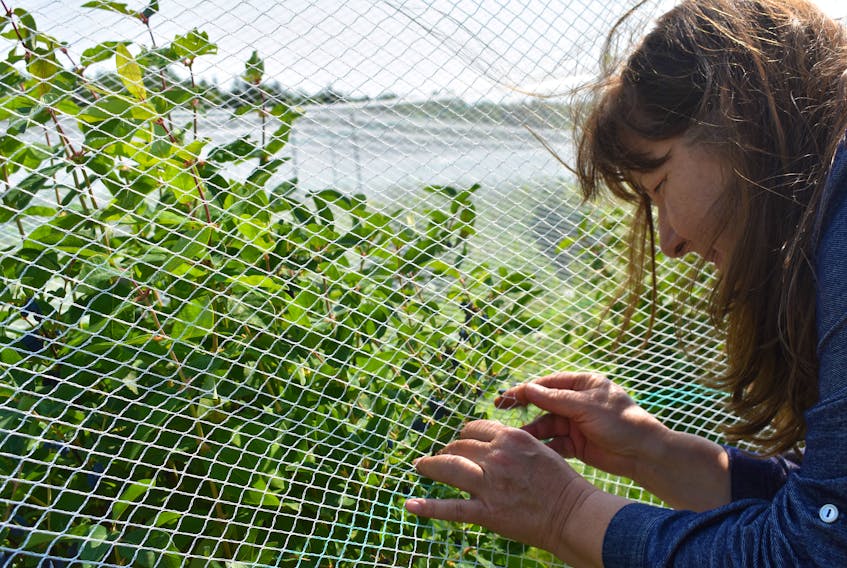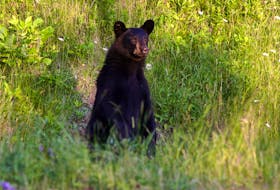DURHAM, N.S. – In April 2017 Deborah and Mark Geck faced an alarming sight.
As they went to check on how their haskap plants had fared through the winter at land they own in Durham, they found thousands had heaved roots.
“Oh my gosh! They’re all out of the ground. What are we going to do?” Deborah recalls thinking.
Some would have simply thrown up their hands and walked away. But not the Gecks. Instead, they picked up all the plants and put them in bags. They fed them a compost tea, of sorts, to revive them and allow their roots to recover.
A year later the majority of those plants are back in the ground and growing along with 15 acres more of new plants.
Driving a tractor to mow between the rows of plants, Deborah keeps in mind the end goal – 20 acres of haskap bushes, six feet high and four feet wide, yielding thousands of pounds of antioxidant-rich fruit. She’s willing to work through the growing pains to get there.
“We’re always learning, but we’re getting better all the time,” she said. “The first five acres have cost us 10 times more than the other 15.”
They now plant bushes so frost can’t heave them. They’ve found ways to keep weeds at bay with plastic weed barrier. Initially, they had hired people to do weeding but found annual labour costs were too high to justify that practice.
A new adversary has arisen this year. Now that some of the original bushes are bearing in earnest, wax wing birds are stealing the fruit.
To prevent that, the Gecks are testing the use of nets over nine of the rows, each of which have about 100 plants. Results appear positive with fruit growing well under the protection. The nets will be removed when the fruit is harvested.
Deborah isn’t sure if yields will make it worth shipping to market this year. They’re learning about the process and hope within a couple years to be selling full crops.
“The berries are spoken for if we can get them,” Deborah said. “There’s a marketing group we have and they just can’t get enough. They’re sold in March before they’re even grown.”
This year’s weather has actually been perfect for the berries, Deborah said.
“A season like this would be a bumper crop if we were harvesting because of all the water we’re getting beforehand.”
But for now, she’ll continue putting in hard work and wait for the day she can reap the benefits.
Haskap berries vary from plant to plant
DURHAM, N.S. – What makes the haskap berries so appealing is their nutrients. They are said to have three times the antioxidants of wild blueberries.
The fruit of a haskap varies from plant to plant in taste. Some are tart, others sweet. Often it’s a combination that’s best for pie or jelly.
“The mix is what makes the unique taste,” Deborah Geck says.
The berries the Gecks grow will be completely organic. There are also strict standards for harvesting. Any that fall on the ground have to be left there to prevent contamination. Haskaps are hardy and the blossoms are rarely affected by frost like the one that impacted other crops in the province this year.









